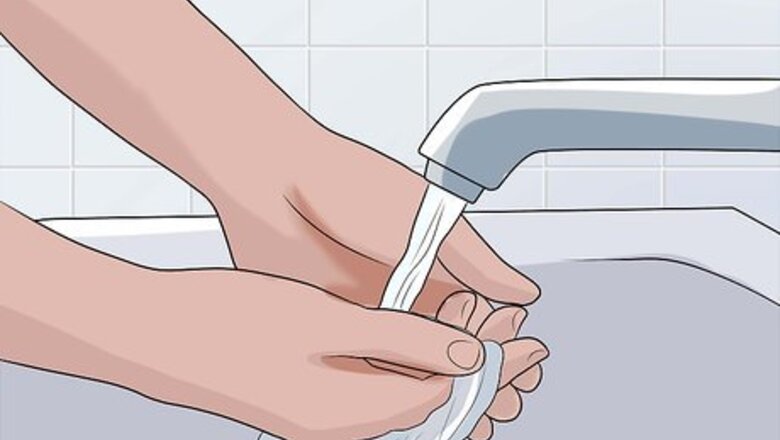
views
Locating the Contacts
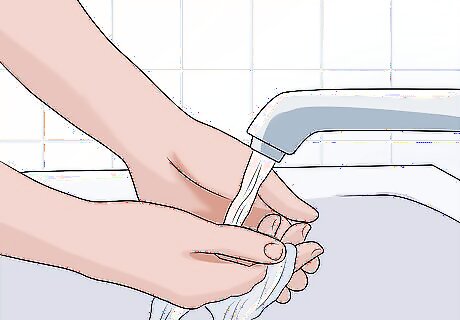
Wash your hands. Use warm water and soap to wash your hands. This will prevent bacteria from entering your eyes which can lead to infection (like acanthamoeba keratitis). Dry your hands on a clean towel. Avoid toweling the fingertips that will touch your eyes, so you don't get towel fibers on your fingers. Keep your nails trimmed and cleaned. Removing contacts with long nails can tear or split the contacts.
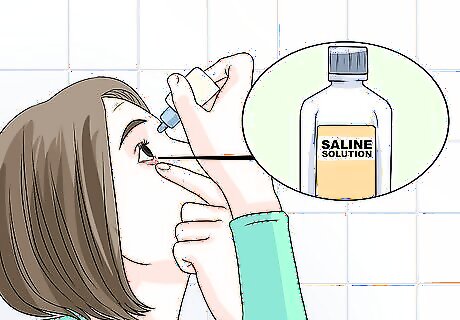
Hydrate the eye with saline or rewetting drops. Your vision is blurry when eyes are dry so it can be difficult to tell if the contact is in place or not. Pull your lower eyelid down and apply a few drops of saline or artificial tears to hydrate the lens a little. This should make it easier to remove. Be careful when applying saline drops. The tip of the bottle shouldn't touch your eye. Doing so can introduce bacteria into your eye. In a pinch, some contact lens disinfecting solutions are safe to apply. Use caution though — if the bottle tip is red or there are warnings on the bottle about not putting the solution in your eye, then don't use it.
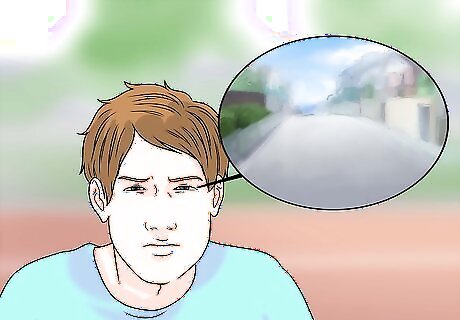
Evaluate whether or not you can see. This is a first indication of whether or not the contact is still in your eye. If your contact is truly stuck in your eye, your eye will probably feel very uncomfortable or it may hurt to open it. Your eye may water and hurt if the contact is stuck under the lid or in the corner of your eye.
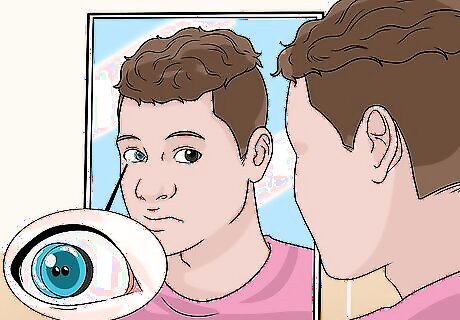
Check if the contact is still in place. You can try simply looking in the mirror. The contact might have shifted slightly off the cornea, but may still visible on the center of your eye. If you still can't find the contact, consider whether or not it could have fallen out while you slept. Or, it may just be stuck in a hard to see spot, like underneath your upper eyelid. If you've truly lost the contact, it may have fallen out. In this case, you won't find the contact by looking throughout your eye.
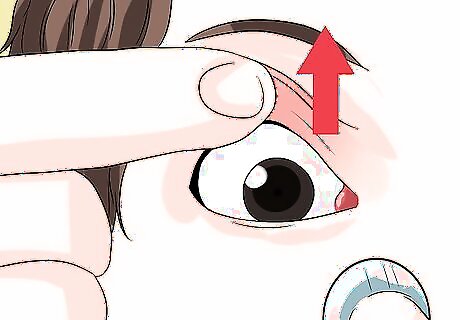
Look under the upper eyelid. If you don't see the eyelid on your cornea (in the center of your eye), lift your upper eyelid while you look downward. Shine a flashlight underneath the eyelid to help find the contact. If your contact is "lost" in your eye, you'll probably feel a strange sensation, like something is stuck in your eye. The contact may have folded and is hiding under the eyelid. Shining a flashlight can make this easier to see.
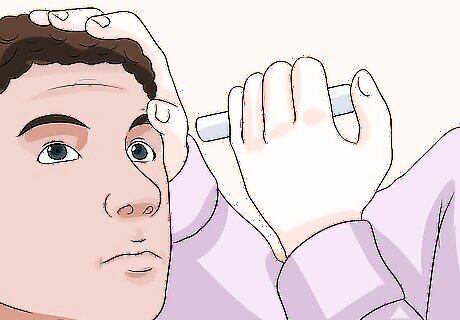
Ask for help. If both of your contacts are out of place, you won’t be able to see clearly. Ask a parent, roommate or friend to help you find your contacts. The helper can shine a flashlight in your eyes to locate the lenses. If you're comfortable with it, the helper could even assist you by removing the contacts from your eyes for you. Your helper can also look around your bedroom to see if the contacts fell out while you slept.
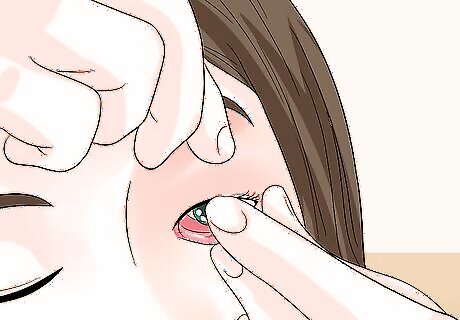
Move the contact from underneath your eyelid. Blink and use your fingertips to rub on the closed eyelid to get the contact to move. You may need to add more saline to hydrate it so it moves easily. Avoid rubbing your eyelids against the contact unless you've added moistening drops. Rubbing dry contacts could scratch the surface of your eye.
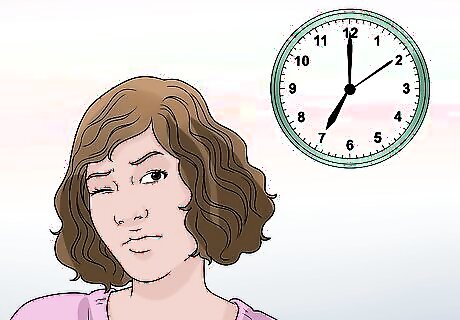
Wait and rehydrate. If your contacts feel very dry, it may take several applications of saline drops and time before they start to feel moist again. Wait 15 minutes to give them a chance to become fully hydrated. Don't try to remove the lens until it slides around your eye like normal. Attempting to rip it off may cause an injury. Also, don't try to unfold the lens before removing it from you eye since you're more likely to tear it.
Removing the Contacts
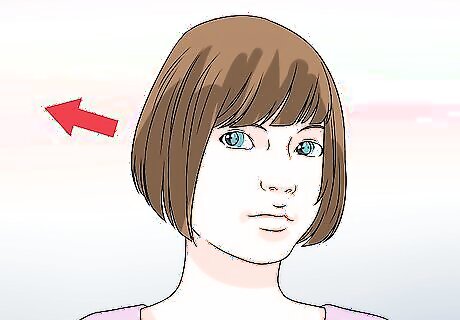
Move your contact onto the cornea. If your lens is stuck on the side of your cornea, try looking in the opposite direction. This can help the lens slide closer to the center of your cornea. Before you can remove the contact, make sure it slides easily across your eye, and gently slide it back into place.
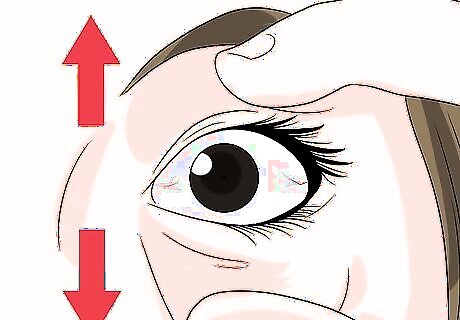
Move the contact from under an eyelid. If your lens is stuck underneath an eyelid, take your eyelid by your index finger and thumb. Gently twist your wrist so that the fingers flip your upper eyelid inside out. This will expose the contact, making it easier to remove. Some eye doctors recommend inserting a new contact lens if you're having trouble getting a contact out from under your eyelid. Putting in a new contact and blinking may bring the old contact down from underneath the lid.
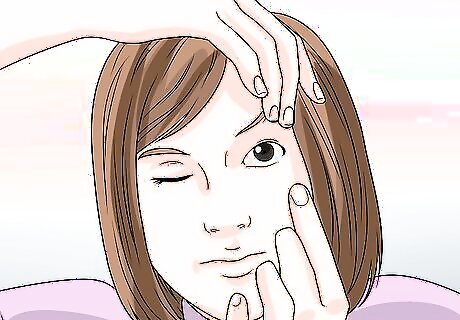
Hold open your eye. Use your middle finger to hold your lower eyelid open. Take your index finger and slide the lens down to the white part of your eye. If the contact is fully hydrated, it won't stick to your eye. Add saline or rewetting drops if your eye or contact starts feeling dry again.
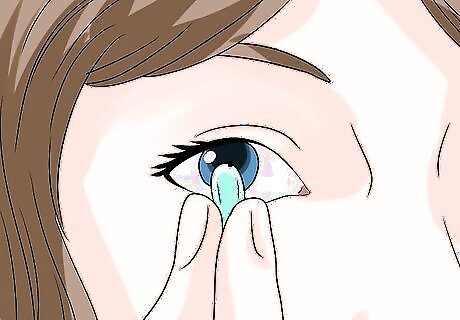
Squeeze the contact to remove it. Carefully, squeeze the lens slightly between your index finger and thumb so that it starts to fold outward. Gently remove it from your eye. Immediately place the contact into a clean case with fresh solution. Repeat this with the contact in your other eye.
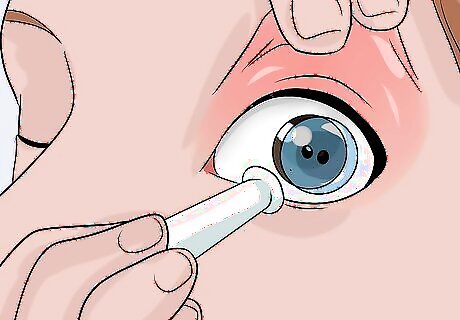
Use a special tool to remove your contact. If you're having trouble removing the contacts with your fingers, you can purchase a small tool that safely grips the contact so you can easily remove it. Carefully follow the instructions or ask your eye doctor for a demonstration. Using a tool is especially helpful if you can see where the contact is stuck, but you just can't remove it using just your fingers.

Rest your eyes. Once you've gotten the contacts out of your eyes, don't rush to put in a new pair. Your eyes need a break. Don't put in new contacts unless your eyes are no longer red and irritated. You might want to wear glasses for the day to rest your eyes.
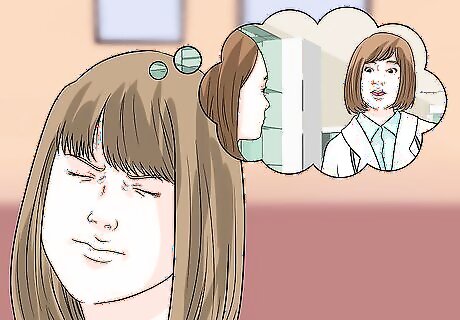
Get professional help. If you still can't remove the contact, you should immediately call your eye doctor and schedule an appointment. Your eye doctor may recommend switching contact lens brands if your contacts often get stuck. You should also consider getting medical attention if: You've tried multiple times to get your stuck contacts out Your eyes are irritated Your eyes are red You feel pain














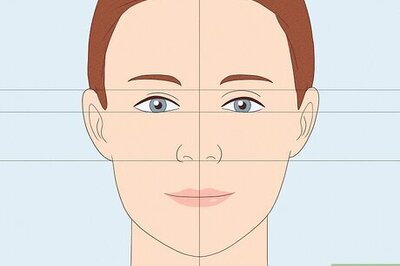
Comments
0 comment